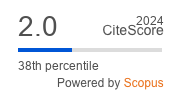Partial Superficial Parotidectomy Versus Extracapsular Anatomical Dissection for the Treatment of Benign Parotid Tumors
DOI:
https://doi.org/10.5644/ama2006-124.376Keywords:
Extracapsular, Parotidectomy, Superficial, Complication, Facial NerveAbstract
Objectives. Superficial benign parotid tumors are a common neoplasm of the salivary glands. Different surgical procedures have been applied for partial superficial parotidectomy (PSP) and extracapsular dissection (ECD), which are the two predominant surgical techniques. Our study aimed to evaluate PSP versus ECD for benign parotid tumors, in relation to post-operative complications and recurrence rates.
Materials and Methods. 266 patients who underwent parotidectomies of benign superficial parotid tumors were evaluated retrospectively. The first group (PSP group) was composed of 143 patients who underwent PSP, and the second group (ECD group) was composed of 123 patients who underwent ECD.
Results. In the ECD group the rate of patients presenting with total postoperative permanent facial nerve paralysis, House-Brackmann grade III, was 0.8%, whereas in the PSP group it was 1.4%. Frey’s syndrome was only reported in the PSP group. Salivary fistula occurred in both groups at similar rates. Sensation dysfunction due to greater auricular nerve division occurred in 72% patients in the PSP group and 10.6% in the ECD group. No statistical difference regarding recurrence rates was found between the two groups.
Conclusions. Both ECD and PSP procedures are safe surgical options for superficial parotidectomy in the treatment of benign tumors, with similar recurrence rates and post-surgical complications, apart from sensation abnormalities due to more extensive auricular nerve division.
Downloads
Published
Issue
Section
License
Copyright (c) 2022 Spyros Laskaris, Dimosthenis Chrysikos, Ioannis Koutrafouris, Maria Piagkou, Vasileios Protogerou, Vasileios Karampelias, Filippos Bekos, Dimitrios Kotzias, Theodore Troupis

This work is licensed under a Creative Commons Attribution-NonCommercial 4.0 International License.





